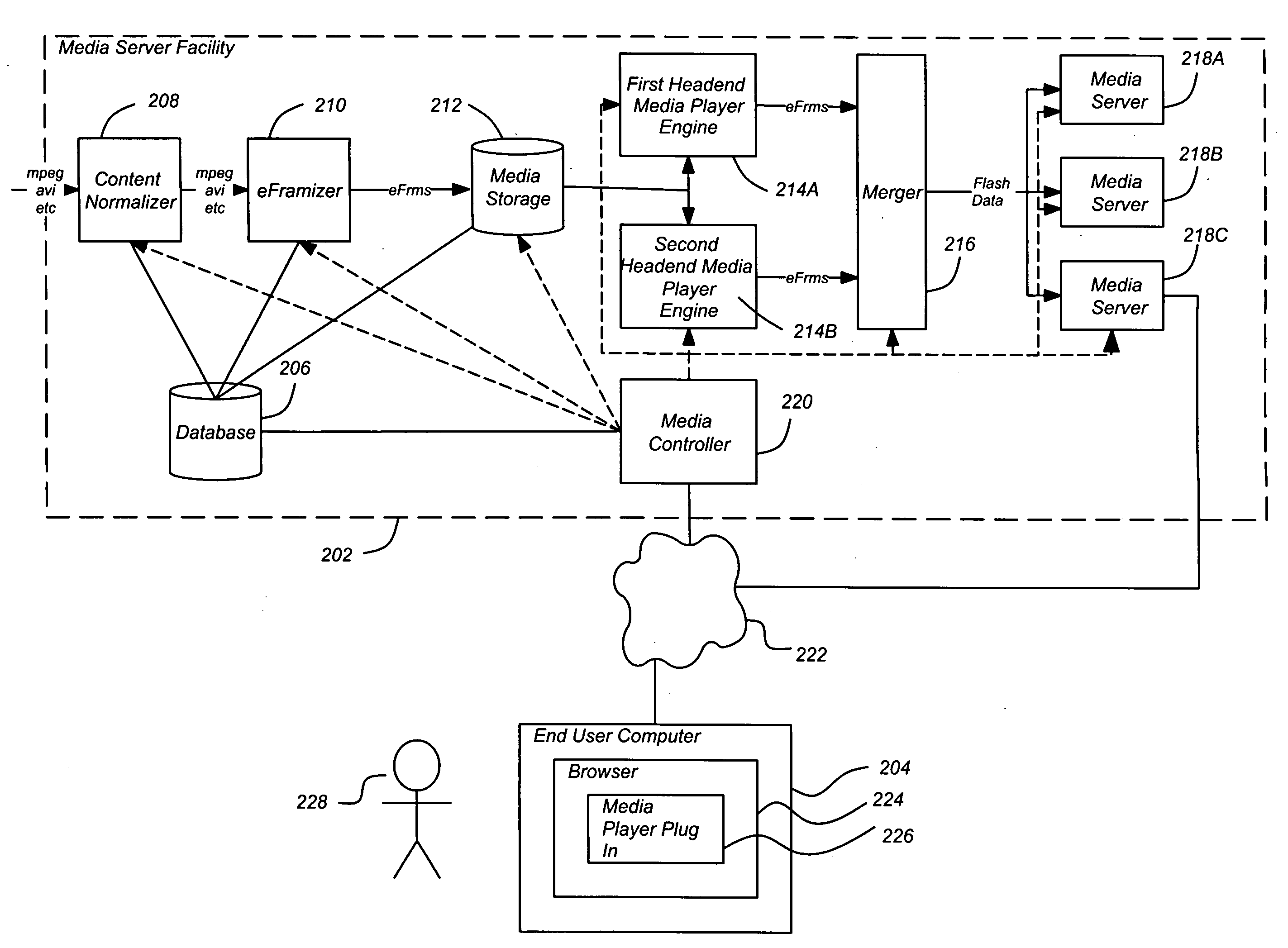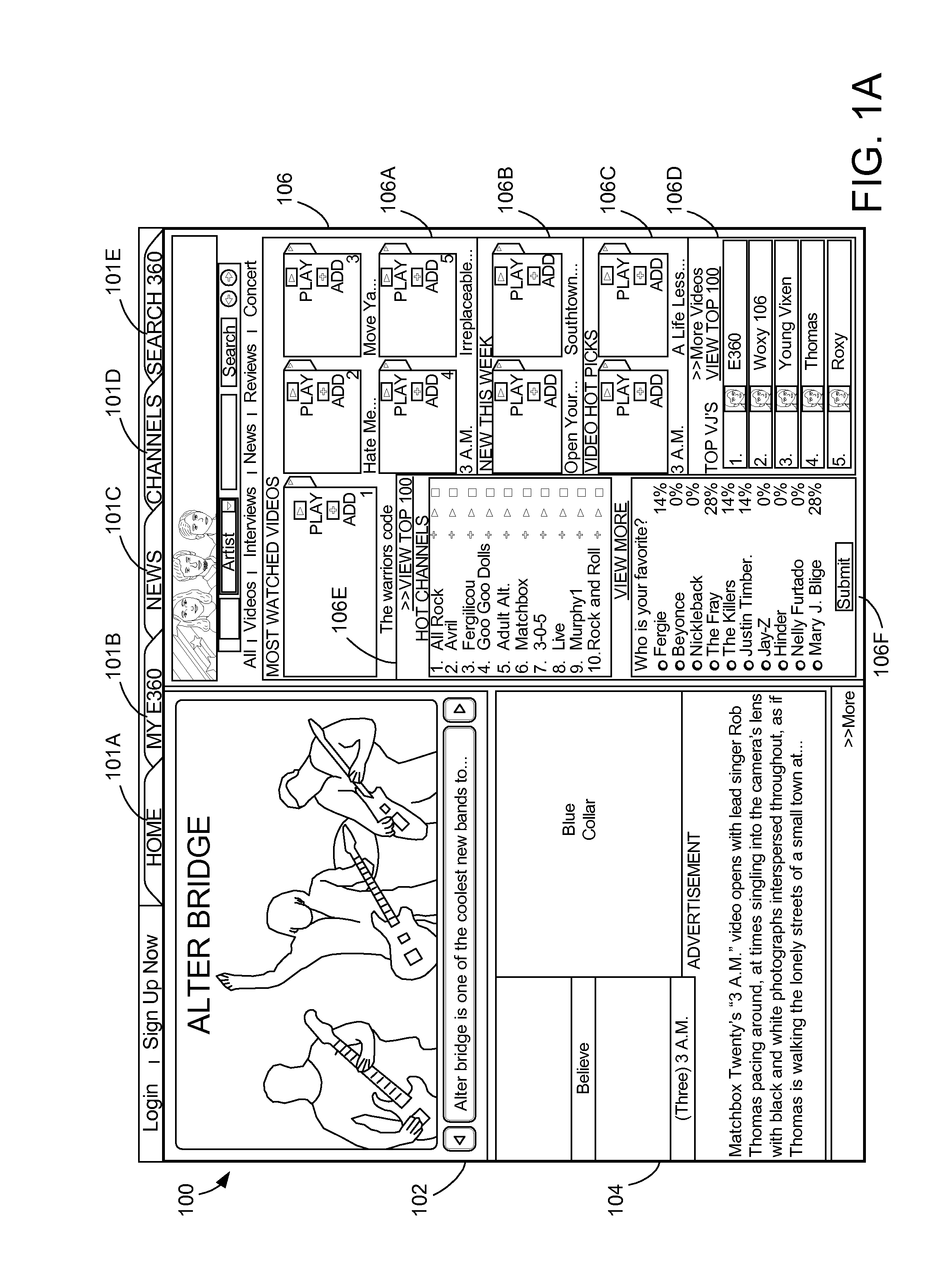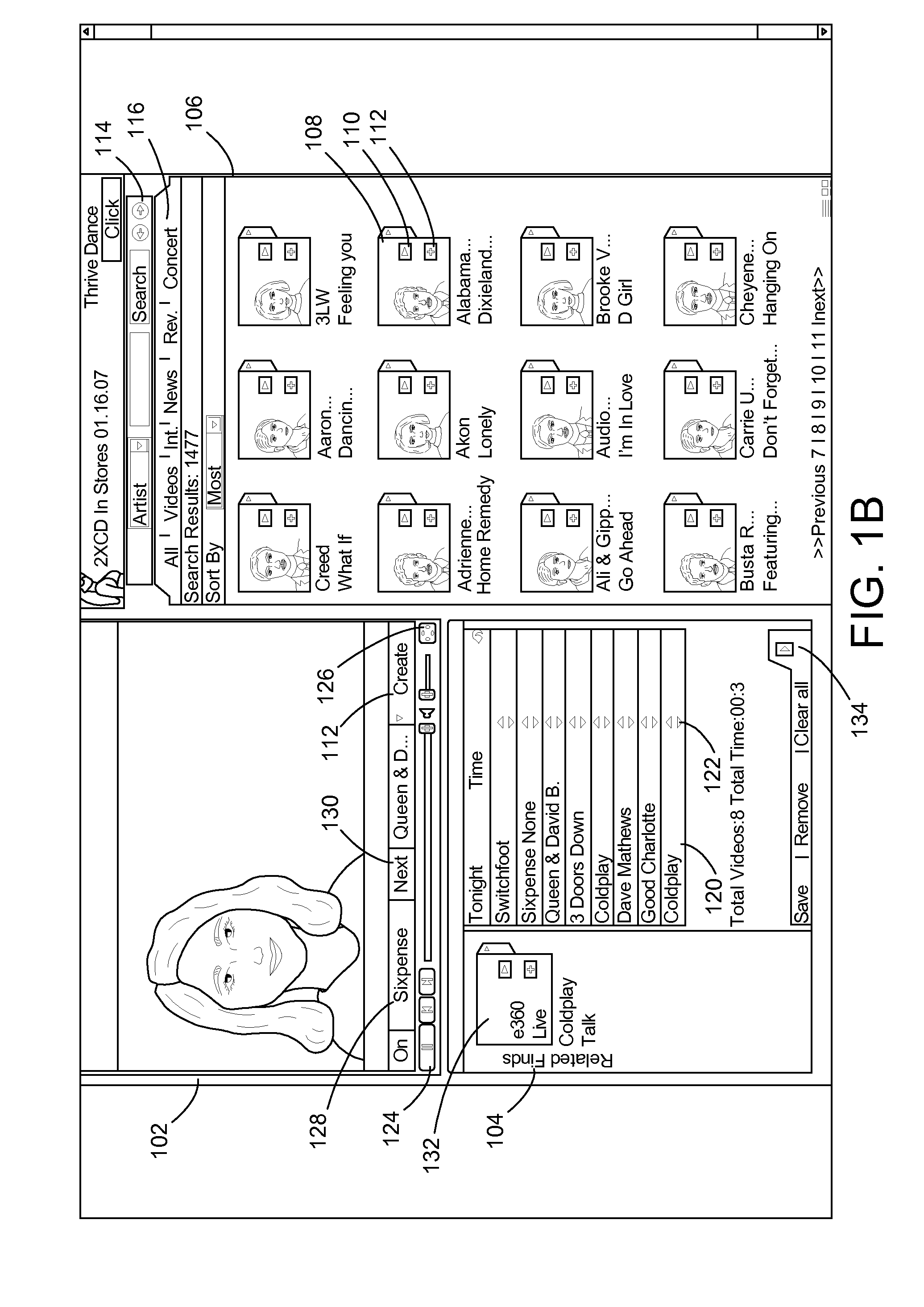Method and apparatus for providing continuous playback of media programs at a remote end user computer
a technology of end user computer and media program, which is applied in the field of system and method of transmitting and receiving information, can solve the problems of affecting the system's ability to provide such services, affecting the throughput of the user's link to the internet, and a significant number of people with internet access do not have these newer machines
- Summary
- Abstract
- Description
- Claims
- Application Information
AI Technical Summary
Benefits of technology
Problems solved by technology
Method used
Image
Examples
Embodiment Construction
[0032]In the following description, reference is made to the accompanying drawings which form a part hereof, and which is shown, by way of illustration, several embodiments of the present invention. It is understood that other embodiments may be utilized and structural changes may be made without departing from the scope of the present invention.
[0033]FIG. 1A is a diagram showing an exemplary embodiment of a user interface 100 through which the end-user can play media programs. Typically, the user interface 100 is presented within an Internet browser, such as one available from MICROSOFT or FIREFOX. In the illustrated embodiment, the browser window includes a set of navigation tabs 101A-101E by which the user can navigate between a home page (illustrated), a personalized page 101B, a page devoted to news and opinions 101C, a page presenting channels to the user (described further below), and a search page 101E.
[0034]In the illustrated home page (which is presented to the user before...
PUM
 Login to View More
Login to View More Abstract
Description
Claims
Application Information
 Login to View More
Login to View More - R&D
- Intellectual Property
- Life Sciences
- Materials
- Tech Scout
- Unparalleled Data Quality
- Higher Quality Content
- 60% Fewer Hallucinations
Browse by: Latest US Patents, China's latest patents, Technical Efficacy Thesaurus, Application Domain, Technology Topic, Popular Technical Reports.
© 2025 PatSnap. All rights reserved.Legal|Privacy policy|Modern Slavery Act Transparency Statement|Sitemap|About US| Contact US: help@patsnap.com



